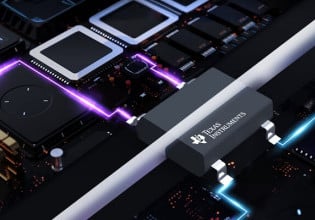The Fifth Annual Digital Power Forum (DPF) was significant in that it represented an acceptance of digital power management and control in both systems and power supply design. The industry is no longer questioning the use of digital control implementation, relative to analog. Issues now center around when the technology will become mainstream, as well as advanced component technologies that could either complement or possibly pose a design threat.
This year’s Forum drew a much larger international contingent, representing both Asia and European semiconductor, power supply and system companies. In addition, the media were particularly vocal in asking questions and keeping the sessions lively.
DPF has become an important destination for new product/technology launches. This year, International Rectifier, Powervation and Energy Star chose DPF for their debut announcements. Exhibitor participation was strong, with comments frequently made about the "quality of the attendees." One exhibitor said that they didn’t even need to attend any more shows – at DPF, they had hooked up with every system maker they wanted.
In the Plenary Session, Chris Young from Zilker Labs identified four key trends that are driving the adoption of digital control: performance, cost, ease of use and reliability. Zilker already sees digital as a lower-cost solution than analog. Companies have also introduced products that stress ease of use, such as remote operation, no programming, and multiple uses for one piece of silicon.
Reliability and performance were addressed by a number of the speakers at DPF. For example, reliability includes diagnostics, system coordination, fault response and higher levels of integration. Ericsson Power Modules presented the results of reliability testing at the chip level, including design verification testing for analog versus digital devices. They indicated that "all testing of digital board-mounted power supplies showed equal or better reliability than the corresponding analog product."
Performance issues include efficiency, transient response, stability and density. Algorithms for optimization are a critical piece of digital control, and many companies are focusing on this level of design. Ultimately, Zilker believes that availability, standardization, longevity and customer-recognized value will be the requirements for digital to be recognized as a "mainstream" technology.
So when does the industry expect digital power management and control to become mainstream? The DPF Roundtable panel concluded that a lot depends on how "mainstream" is defined. If mainstream means commercial availability, then it is mainstream now. But most of the panelists agreed that mainstream implied a certain share of the market – with projections ranging from 5 to 50%. Using this range, the panelists project mainstream adoption within the next 10 years.
Widespread adoption is dependent on customer acceptance, and Brian Zahnstecher from Hewlett-Packard identified several important issues from the original equipment manufacturer (OEM) perspective. OEMs need a "total solution" devoid of marketing hype. Zahnstecher was "extremely optimistic" about digital control technology and considered the challenges to be on the "non-technical" side (such as marketing and legal issues).
As digital matures, perhaps the best way to sum up its acceptance is this comment from Jim Templeton at Maxim, "We’ll know digital has gone mainstream when we don’t even call it ’digital’ anymore." It may not be at that point at next year’s Forum in Costa Mesa, California, but can you afford to not know?






